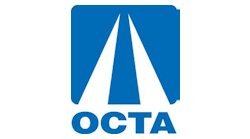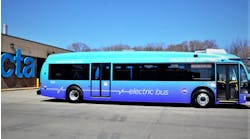OC Bus ridership continues to see positive gains in areas where the Orange County Transportation Authority has focused on improving service through the OC Bus 360° program, changes that were implemented beginning just over a year ago.
According to the results of a report presented to the OCTA Board of Directors today, bus ridership was up 19.6 percent as of September 2017 compared to a year earlier on routes in core areas of the county where service was improved.
Other elements of the OC Bus 360° plan also are showing positive results, including the introduction of additional transportation options and integration of new technologies.
“Operating traditional bus service in every corner of the county is no longer an efficient or cost-effective way to operate a transit system,” said OCTA CEO Darrell Johnson. “The OC Bus 360° efforts clearly indicate that successful public transportation in the future will result from targeted solutions for the individual needs of the 3.1 million people in Orange County.”
The OC Bus mobile-ticketing app offers riders greater convenience for purchasing fares and using electronic ticketing on their mobile device. Since its introduction in the summer of 2016, more than 67,000 riders have downloaded the mobile app, with 300 new app users on average per week.
In August, OCTA introduced a pilot program at Santa Ana College that allows all students with a valid student I.D. to ride the OC Bus system for free for the first year and for a minimal fee ($6.75 for full-time students and $5.75 for part-time students) the second and third years of the program.
The goal of the pilot program is to introduce students to the convenience and affordability of riding the bus and encourage them to utilize public transit now and in the future. In the first eight weeks, nearly 3,000 students signed up for the program.
OCTA will also launch a micro-transit pilot program next summer in two regions of the county where fixed-route bus service was reduced or eliminated. Through that program, which will operate in areas of Huntington Beach as well Laguna Niguel and Mission Viejo, smaller vehicles than the traditional 40-foot bus will provide on-demand transit services that will allow people to share the ride to their destinations.
Through Measure M, the county’s half-cent sales tax for transportation, OCTA also will solicit interest from local cities to provide shuttle services to serve specific transportation needs to special events, and popular retail and employment destinations in their area.
The uptick in ridership on the improved routes came despite national and regional trends that clearly show that fewer people overall are taking public buses to reach their destination.
In Orange County, overall bus ridership declined 3 percent in the second quarter of this year, compared to the same period a year ago. But that’s a slower decline than the nationwide average of a 4.2 percent ridership drop and similar drops among other transit agencies in the region.



